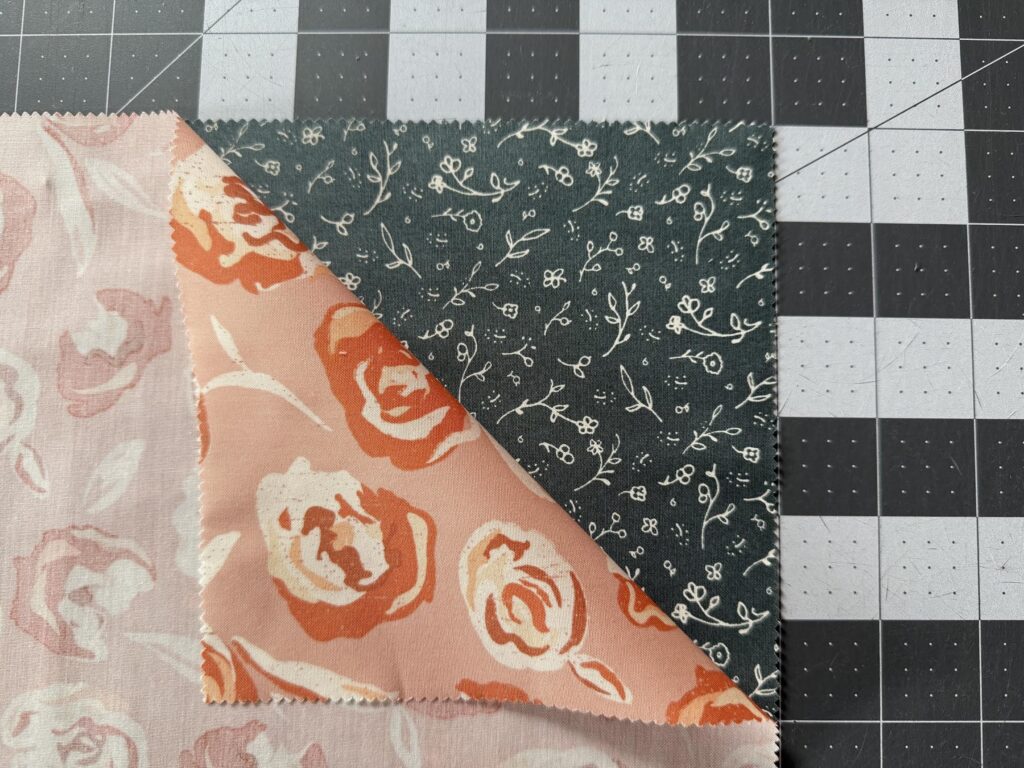Understanding quilting terms can feel like decoding a secret code. When I first learned to sew a few years ago, I felt like reading a pattern was a foreign language. I did not feel confident following the steps and had to look up what it all meant.
I want you to enjoy quilting and understand those quilting terms. Make those quilts you’re going to love!
Whether you’re a beginner or looking to refresh your knowledge, understanding these key quilting terms will help you feel confident tackling your next project.
From fabric cuts to seam techniques, here’s your go-to guide for quilting lingo. Let’s dive in!
1.Quilting Term: RST (Right Sides Together)
RST is a term you’ll see often in quilting patterns. It means placing the “right sides” of two pieces of fabric together before sewing. The “right side” is the printed or decorative side of the fabric, while the “wrong side” is usually unprinted or less vibrant.

Pro Tip: Always double-check that your fabric is RST before stitching, especially when piecing blocks.
- Quilting Term: WST (Wrong Sides Together)
WST refers to placing the wrong sides of two fabric pieces together. While this isn’t as common as RST, it’s often used when binding or making reversible projects.
Pro Tip: Pay close attention to whether your pattern specifies RST or WST to avoid needing to seam rip later!
3. Quilting Term: HST (Half-Square Triangle)
Half-square triangles are a building block of many quilt designs. They’re made by cutting a square of fabric diagonally into two triangles or sewing two squares together and then cutting them. HSTs are versatile and can be used to create countless designs like pinwheels and stars.
Related Resource: Need help mastering HSTs? Check out these HST tutorials:
- Quilting term:: WOF (Width of Fabric)
The WOF is the width of the fabric from selvage to selvage. This measurement is important when cutting strips, borders, or binding. Most quilting cotton fabrics have a WOF of 42″-44″, but always measure to be sure!
5. Quilting Term: FUSSY CUTTING
Fussy cutting refers to cutting fabric intentionally to feature a specific motif or design. This technique is great for adding visual interest to quilt blocks, especially when working with printed fabrics that have standout elements like flowers or shapes.
Pro Tip: Use a clear ruler to precisely center the design you want to highlight when fussy cutting.
6. Quilting Term: BASTING
Basting is the process of temporarily holding your quilt layers (top, batting, and backing) together before quilting. You can baste with safety pins, basting spray, or long stitches.
Want to learn basting techniques? Visit my step-by-step basting guide.
7. Quilting Term: WIP (Work in Progress)
Quilters know that WIPs (Works in Progress) often multiply! A WIP refers to any unfinished project you’re currently working on—or thinking about finishing someday.
Pro Tip: Dedicate a storage bin or basket for WIPs to keep your quilting space organized. Here are tips to organize your WIPs.
8. Quilting Term: BINDING
Binding is the fabric strip that encases the edges of your quilt for a polished finish. It’s one of the final steps in completing your quilt. You can choose to machine-stitch or hand-finish your binding, depending on your preference.
Check out my binding tutorial for tips on perfecting your edges.
9. Quilting Term: SEAM ALLOWANCE
Quilting patterns typically call for a 1/4″ seam allowance. This is the distance between your stitching line and the raw edge of the fabric. Maintaining a consistent seam allowance is crucial for ensuring your quilt pieces fit together perfectly.
Pro Tip: If your machine doesn’t have a 1/4″ foot, use a piece of washi tape as a guide on your sewing machine bed.
Enjoy my FREE course learning how to sew with an accurate ¼” seam allowance.
10. Quilting Term: Sashing
Sashing refers to the strips of fabric placed between quilt blocks. It frames your blocks, creating visual separation and often making your quilt design stand out.
SUMMARY OF QUILTING TERMS
Learning these quilting terms is like unlocking the door to a world of creativity and possibilities. Whether you’re working with RST, cutting along the WOF, or perfecting your HSTs, these essential quilting terms will make your projects smoother and more enjoyable.
For more beginner-friendly resources, visit my MUST HAVE QUILTING SUPPLIES link.
JOIN THE COMMUNITY
What quilting terms or techniques have you found most helpful? Let me know in the comments, or join my Quilters Candy online community for more tips, inspiration, and support!
MORE BLOG POSTS LIKE THIS
If you enjoyed this blog post, you will love these tutorials!
BEST SELLING QUILT PATTERNS
Check out these best selling quilt patterns in my shop.